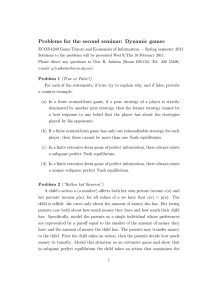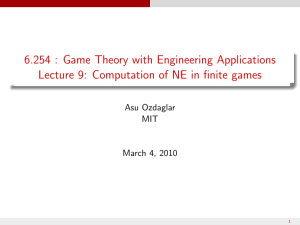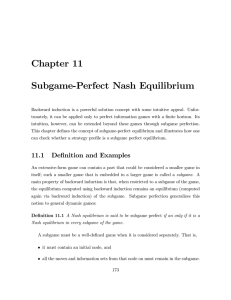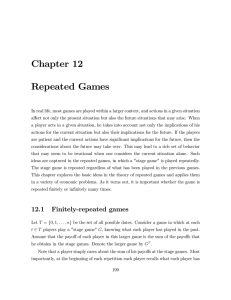Problems for the seventh seminar: Dynamic games
advertisement
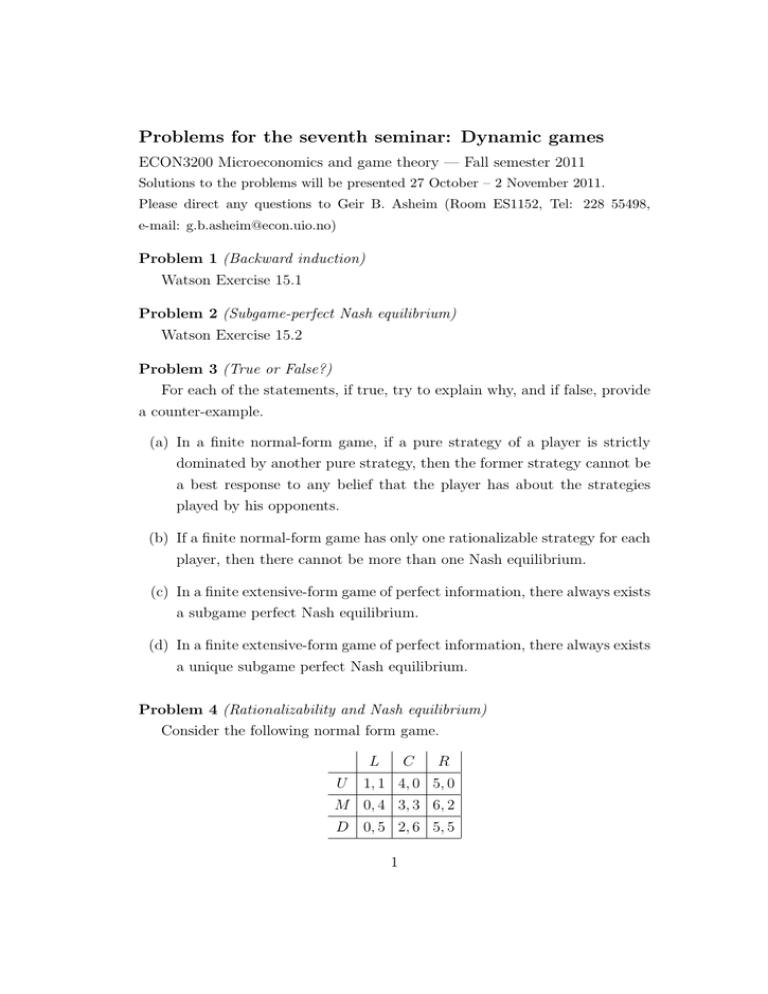
Problems for the seventh seminar: Dynamic games ECON3200 Microeconomics and game theory — Fall semester 2011 Solutions to the problems will be presented 27 October – 2 November 2011. Please direct any questions to Geir B. Asheim (Room ES1152, Tel: 228 55498, e-mail: g.b.asheim@econ.uio.no) Problem 1 (Backward induction) Watson Exercise 15.1 Problem 2 (Subgame-perfect Nash equilibrium) Watson Exercise 15.2 Problem 3 (True or False?) For each of the statements, if true, try to explain why, and if false, provide a counter-example. (a) In a finite normal-form game, if a pure strategy of a player is strictly dominated by another pure strategy, then the former strategy cannot be a best response to any belief that the player has about the strategies played by his opponents. (b) If a finite normal-form game has only one rationalizable strategy for each player, then there cannot be more than one Nash equilibrium. (c) In a finite extensive-form game of perfect information, there always exists a subgame perfect Nash equilibrium. (d) In a finite extensive-form game of perfect information, there always exists a unique subgame perfect Nash equilibrium. Problem 4 (Rationalizability and Nash equilibrium) Consider the following normal form game. L U C R 1, 1 4, 0 5, 0 M 0, 4 3, 3 6, 2 D 0, 5 2, 6 5, 5 1 (a) Explain how you can determine the set of rationalizable strategies for each player. What strategies are rationalizable for each player? (b) Determine the unique Nash equilibrium in this game. Problem 5 (Subgame-perfect Nash equilibrium) Consider the strategic situation of Problem 4, but assume now that player 1 makes his choice of U , M or D before player 2 makes her choice of L, C or R. Assume furthermore that player 2 can observe the choice of player 1 before making her own choice. (a) What is the set of pure strategies for player 2? (b) Determine the unique subgame perfect Nash equilibrium. Problem 6 (Reporting a crime) A crime is observed by a group of n people. Each person would like the police to be informed but prefers that someone else make the phone call. Specifically, suppose that each person attaches the value v to the police being informed and bears the cost c if she makes the phone call, where v > c > 0. (a) Model this situation as normal form game. (b) Find the set of pure strategy Nash equilibria. (c) Find the symmetric mixed strategy Nash equilibrium. (d) In the symmetric mixed strategy Nash equilibrium, how does the probability that the police will be called vary with the number of people n? 2


